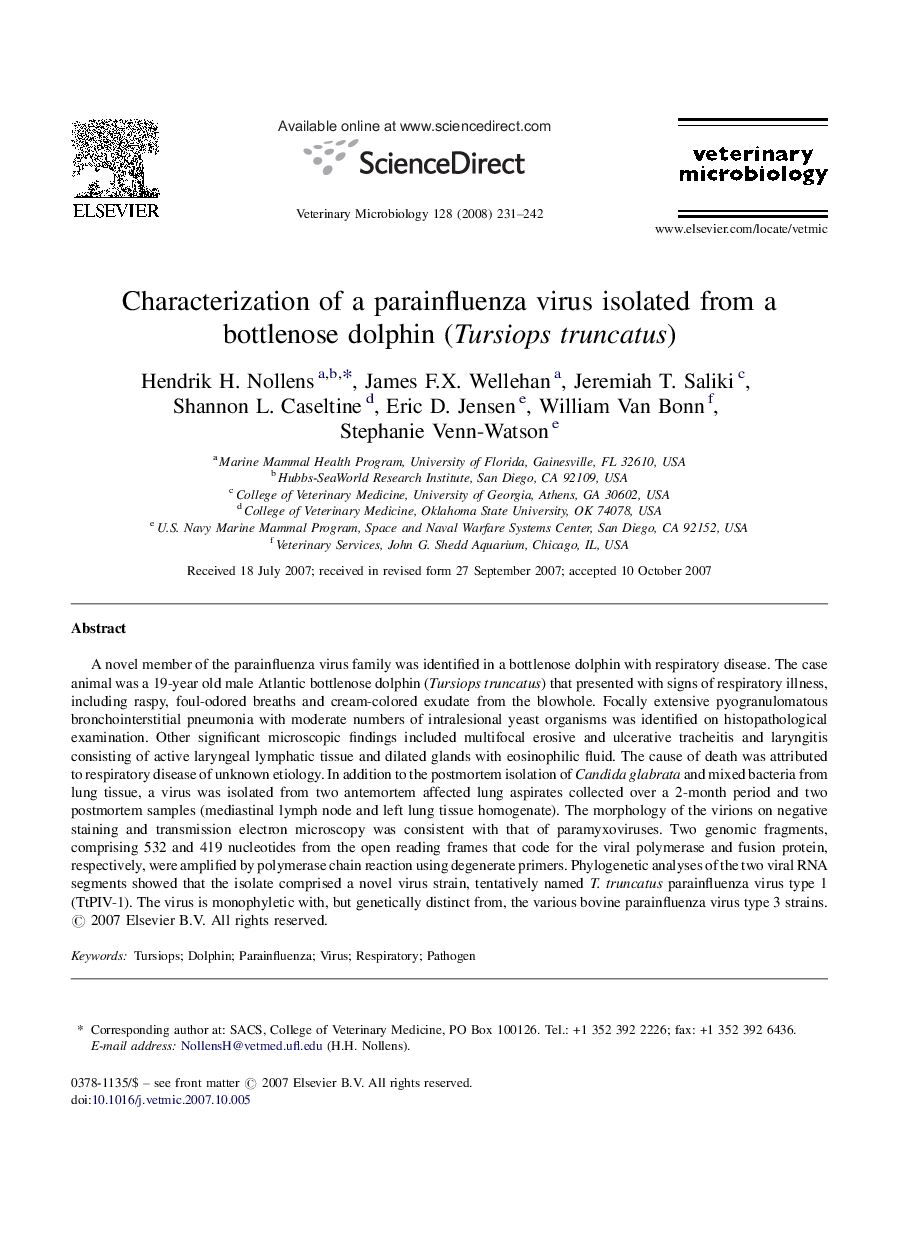| Article ID | Journal | Published Year | Pages | File Type |
|---|---|---|---|---|
| 2468858 | Veterinary Microbiology | 2008 | 12 Pages |
A novel member of the parainfluenza virus family was identified in a bottlenose dolphin with respiratory disease. The case animal was a 19-year old male Atlantic bottlenose dolphin (Tursiops truncatus) that presented with signs of respiratory illness, including raspy, foul-odored breaths and cream-colored exudate from the blowhole. Focally extensive pyogranulomatous bronchointerstitial pneumonia with moderate numbers of intralesional yeast organisms was identified on histopathological examination. Other significant microscopic findings included multifocal erosive and ulcerative tracheitis and laryngitis consisting of active laryngeal lymphatic tissue and dilated glands with eosinophilic fluid. The cause of death was attributed to respiratory disease of unknown etiology. In addition to the postmortem isolation of Candida glabrata and mixed bacteria from lung tissue, a virus was isolated from two antemortem affected lung aspirates collected over a 2-month period and two postmortem samples (mediastinal lymph node and left lung tissue homogenate). The morphology of the virions on negative staining and transmission electron microscopy was consistent with that of paramyxoviruses. Two genomic fragments, comprising 532 and 419 nucleotides from the open reading frames that code for the viral polymerase and fusion protein, respectively, were amplified by polymerase chain reaction using degenerate primers. Phylogenetic analyses of the two viral RNA segments showed that the isolate comprised a novel virus strain, tentatively named T. truncatus parainfluenza virus type 1 (TtPIV-1). The virus is monophyletic with, but genetically distinct from, the various bovine parainfluenza virus type 3 strains.
